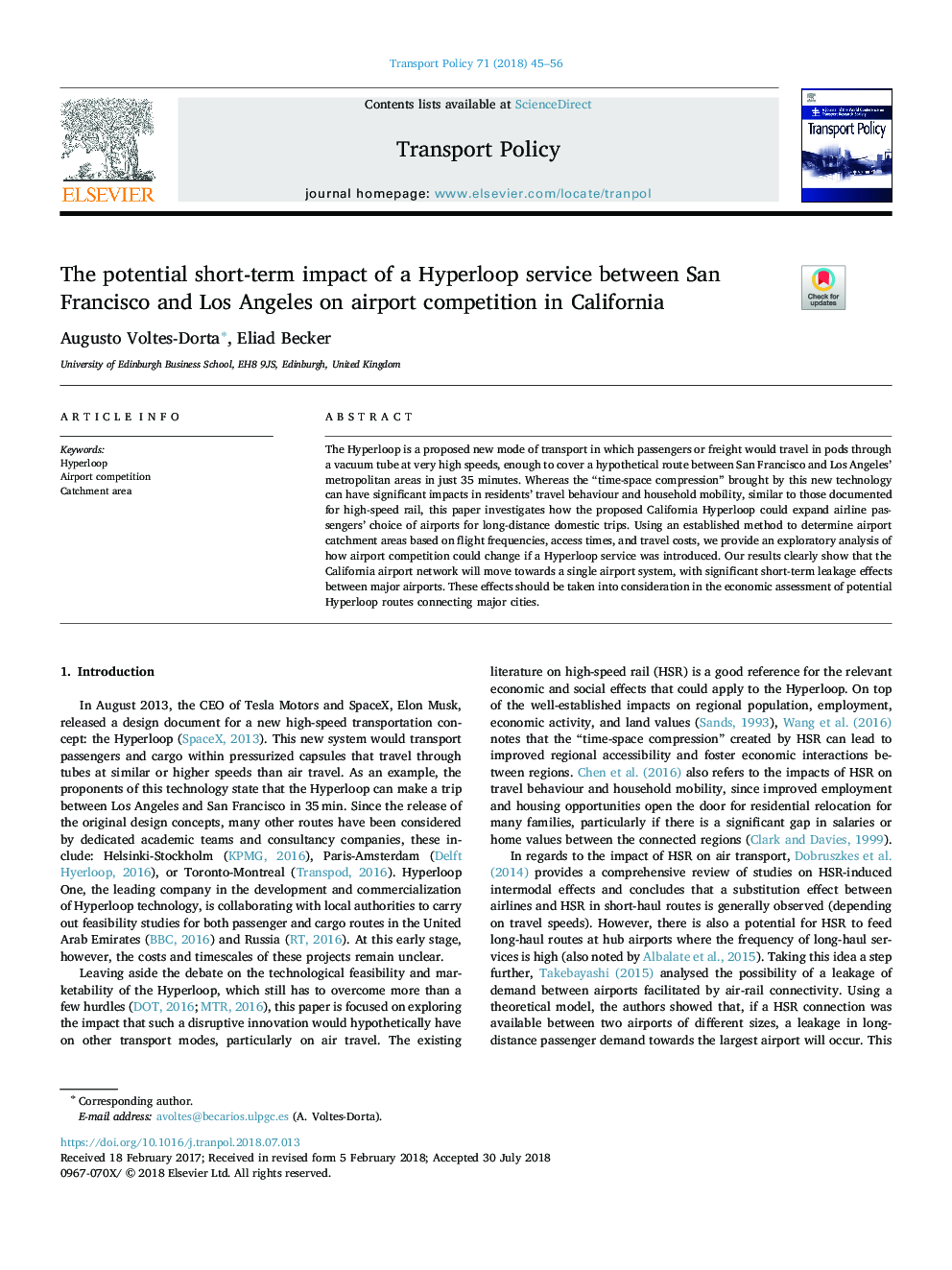| Article ID | Journal | Published Year | Pages | File Type |
|---|---|---|---|---|
| 7496807 | Transport Policy | 2018 | 12 Pages |
Abstract
The Hyperloop is a proposed new mode of transport in which passengers or freight would travel in pods through a vacuum tube at very high speeds, enough to cover a hypothetical route between San Francisco and Los Angeles' metropolitan areas in just 35 minutes. Whereas the “time-space compression” brought by this new technology can have significant impacts in residents' travel behaviour and household mobility, similar to those documented for high-speed rail, this paper investigates how the proposed California Hyperloop could expand airline passengers' choice of airports for long-distance domestic trips. Using an established method to determine airport catchment areas based on flight frequencies, access times, and travel costs, we provide an exploratory analysis of how airport competition could change if a Hyperloop service was introduced. Our results clearly show that the California airport network will move towards a single airport system, with significant short-term leakage effects between major airports. These effects should be taken into consideration in the economic assessment of potential Hyperloop routes connecting major cities.
Keywords
Related Topics
Social Sciences and Humanities
Social Sciences
Geography, Planning and Development
Authors
Augusto Voltes-Dorta, Eliad Becker,
